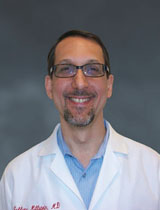Takeaway
Even when clear and without excessive jargon, explanations of body processes can be confusing for some patients. Real world, non-medical analogies may be enlightening.

Connecting with Patients | September 28, 2023 | 1 min read
By Jeffrey Millstein, MD, Penn Medicine
At a recent office visit, my patient confided feeling upset over her recent oncology follow up. She had a lung cancer removed surgically in the spring, and her oncologist recommended additional (adjuvant) chemotherapy to help prevent recurrence.
“You no longer have cancer,” the doctor said. “This medicine will keep it from coming back.”
My patient was unsettled. “If I don’t have cancer anymore, why would I need treatment?” she asked me.
I explained that, even after surgery, a few cancer cells may remain in her body and escape detection. Her immune system will probably destroy them, but the chemotherapy helps make sure they’re gone. It is not 100% guaranteed, but the prognosis will be better with treatment.
She still looked worried and unconvinced. “But I don’t have cancer now,” she repeated. “Why treat something that isn’t there?”
I decided to try a different approach. “If there was a swarm of ants on the floor, I would wipe them all away with a cloth. Even though they’re gone, I would still spray some bug killer on the area to make sure they don’t come back.”
Her face lit up. She got it and thanked me for helping her understand.
This patient helped me remember that sometimes we need to get outside of the human body with our explanations. Cells, enzymes, organs and body processes are second nature to clinicians, but may be difficult for those without a medical background to imagine. A real world non-biological example may provide a helpful analogy.
This piece expresses the views solely of the author. It does not necessarily represent the views of any organization, including Johns Hopkins Medicine.

